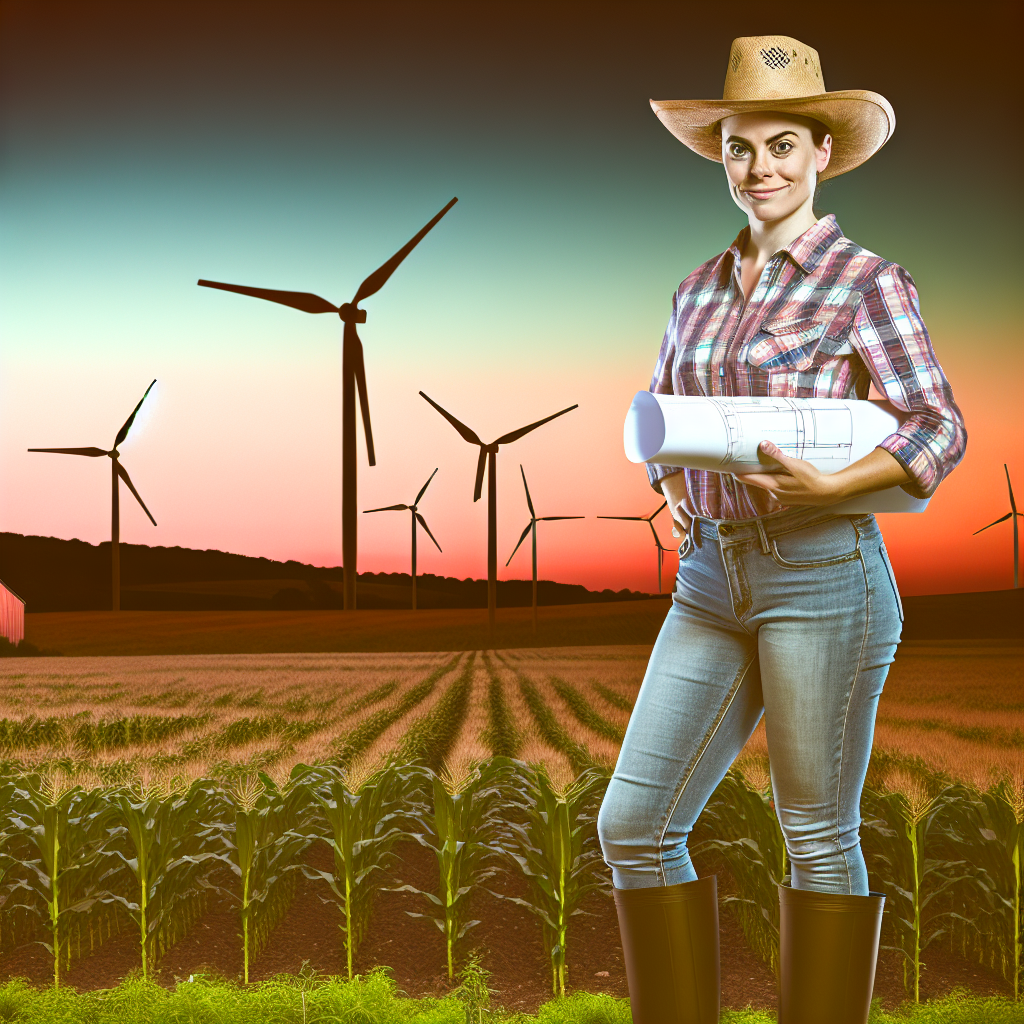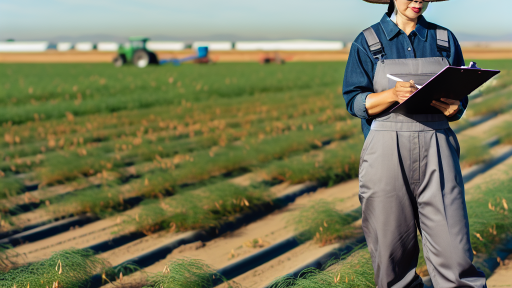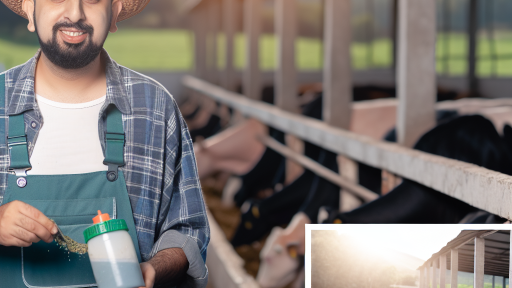Introduction to Wind Energy
Understanding Wind Energy
Wind energy captures the power of moving air to generate electricity.
This renewable resource converts kinetic energy into usable power.
Farmers can harness wind energy for multiple agricultural operations.
Wind turbines provide an efficient way to convert wind into electricity.
Importance of Wind Energy in Agriculture
Wind energy represents a sustainable choice for agricultural operations.
Utilizing wind helps reduce reliance on fossil fuels.
This approach lowers energy costs over time for farmers.
Additionally, incorporating wind energy supports environmental sustainability.
Farmers who invest in wind energy often increase their energy independence.
Economic Benefits for Agricultural Operations
Installing wind turbines can offer significant financial incentives.
Many government programs provide grants or tax credits for wind installations.
Farmers can benefit from selling excess energy back to the grid.
Wind energy projects can also enhance local job creation.
Such investments contribute to overall rural economic development.
Long-Term Sustainability
Implementing wind energy supports long-term agricultural productivity.
Transform Your Agribusiness
Unlock your farm's potential with expert advice tailored to your needs. Get actionable steps that drive real results.
Get StartedFarmers can create a reliable energy source for future generations.
Moreover, this energy source reduces greenhouse gas emissions.
Transitioning to wind energy aligns with global sustainability goals.
Current State of Wind Energy Incentives in Various Regions
Overview of Global Wind Energy Incentives
Countries worldwide encourage wind energy through various incentives.
These incentives often include tax credits, grants, and rebates.
Incentives can significantly reduce the initial costs for wind projects.
Many nations aim for renewable energy targets to combat climate change.
North America
In North America, the United States offers substantial tax incentives.
The Production Tax Credit (PTC) significantly benefits wind energy producers.
This credit can cover a portion of energy production during the first ten years.
Canada also supports wind energy through federal and provincial programs.
For example, the Government of Ontario provides specific feed-in tariffs.
Europe
Europe is a leader in wind energy development and incentives.
Countries like Germany and Denmark have robust support programs.
Germany’s Renewable Energy Sources Act mandates premium payments for wind energy.
Similarly, the UK implements contracts for difference scheme for renewable projects.
Asia-Pacific
The Asia-Pacific region is rapidly expanding its wind energy market.
China dominates wind energy investments and provides significant incentives.
Local governments often support projects through feed-in tariffs and subsidies.
India also offers tax benefits and accelerated depreciation for wind projects.
Emerging Markets
Emerging markets are beginning to recognize the value of wind energy.
Countries in Africa and Latin America explore various incentive models.
They often collaborate with international organizations for funding support.
For instance, investments in renewable energy in Brazil are increasing.
Showcase Your Farming Business
Publish your professional farming services profile on our blog for a one-time fee of $200 and reach a dedicated audience of farmers and agribusiness owners.
Publish Your ProfileChallenges and Opportunities
Despite the growth, challenges remain in accessing these incentives.
Farmers may struggle with navigating the application processes.
Accessibility varies significantly across different regions.
However, increased awareness can unlock potential benefits for agricultural operations.
Collaboration with local governments can also improve access to incentives.
Economic Benefits of Implementing Wind Energy in Agricultural Operations
Cost Savings on Energy Bills
Integrating wind energy can significantly reduce energy expenses.
Farmers often experience lower utility bills when using wind power.
These savings can be redirected towards other operational costs.
Moreover, consistent energy pricing helps in budgeting.
Access to Incentives and Grants
Various government programs support wind energy investments.
Farmers can qualify for grants that reduce upfront costs.
Additionally, tax credits are available for renewable energy projects.
These financial incentives make wind energy more attractive.
Increased Property Value
Wind energy installations can enhance property value.
Landowners with renewable energy systems tend to attract buyers easily.
This kind of investment signals sustainability to potential investors.
Ultimately, it contributes to long-term financial stability.
Sustainable Farming Practices
Wind energy contributes to environmental sustainability on farms.
By reducing reliance on fossil fuels, carbon footprints decrease.
Farms using wind power can promote eco-friendly practices.
This approach aligns with the growing consumer demand for sustainability.
Energy Independence
Procuring wind energy boosts energy independence for farms.
Farmers are less vulnerable to fluctuations in energy prices.
Reliance on local and renewable energy can enhance resilience.
This self-sufficiency is critical during energy crises.
Learn More: Tailoring Agricultural Insurance to Your Farming Needs
Federal and State Incentives Available for Farmers Adopting Wind Energy Solutions
Introduction to Incentives
Farmers can take advantage of several financial incentives for adopting wind energy solutions.
These incentives come from both federal and state governments.
They aim to promote renewable energy use in the agricultural sector.
Moreover, they can significantly reduce upfront costs.
Federal Incentives
The federal government offers various programs to support wind energy adoption.
One key incentive is the Investment Tax Credit (ITC).
This program allows farmers to claim a tax credit of up to 30% on wind energy systems.
Another important federal program is the Production Tax Credit (PTC).
The PTC provides financial support based on energy production over ten years.
Additionally, USDA’s Rural Energy for America Program (REAP) grants loans and grants for renewable projects.
State Incentives
Many states offer their own incentives for farmers interested in wind energy.
For instance, some states provide tax exemptions for wind energy equipment.
Others offer low-interest loans for project development.
In certain regions, states may offer rebates or cash grants as well.
Showcase Your Farming Business
Publish your professional farming services profile on our blog for a one-time fee of $200 and reach a dedicated audience of farmers and agribusiness owners.
Publish Your ProfileFarmers should research their specific state programs to maximize benefits.
Grant Opportunities
Multiple organizations offer grants for renewable energy projects.
The USDA provides specific funding opportunities for agricultural producers.
Additionally, some private organizations support wind energy research and development.
Farmers can often combine these grants with other federal and state incentives.
Long-Term Benefits
Adopting wind energy can lead to significant long-term savings for farmers.
It reduces dependence on non-renewable energy sources.
Moreover, wind energy helps stabilize energy costs over time.
Farmers can also enhance their sustainability image by going green.
Learn More: Integrating Rural Development Policies into Modern Farming Practices
Case Studies: Successful Agricultural Operations Utilizing Wind Energy
Introduction to Wind Energy in Agriculture
Wind energy presents unique opportunities for agricultural operations.
This renewable resource reduces energy costs significantly.
Additionally, it promotes sustainability in farming practices.
Greenfield Farms: A Leader in Wind Energy
Greenfield Farms exemplifies the integration of wind power in agriculture.
Located in Texas, this farm invested in wind turbines in 2018.
Since then, they have reduced their energy bill by 75%.
Moreover, the farm sells excess energy back to the grid.
This initiative has improved their bottom line while supporting renewable energy.
Maple Ridge Organic Farm: Community Engagement Through Wind
Maple Ridge Organic Farm, based in Oregon, utilizes wind energy effectively.
They installed three wind turbines in 2020 after receiving state incentives.
As a result, their electricity costs have decreased by half.
The farm involves the community by offering tours of their wind project.
This initiative raises awareness and promotes further sustainable practices.
Sunny Acres Vineyard: Diversifying Energy Resources
In 2019, they partnered with a local energy company to install wind turbines.
This partnership has led to a 60% reduction in energy costs.
The vineyard now produces a portion of its own energy.
This shift towards wind energy has attracted eco-conscious customers.
Pine Hill Dairy Farm: Expanding with Wind Incentives
Pine Hill Dairy Farm in Wisconsin adopted wind energy out of necessity.
High energy costs were impacting their operations significantly.
In 2021, they received federal grants to install wind turbines.
Now, they power their entire operation with renewable energy.
This move has made Pine Hill a pioneer in sustainable dairy farming.
Benefits of Wind Energy in Agriculture
These case studies highlight the benefits of wind energy in agriculture.
By investing in wind power, farms reduce costs and promote sustainability.
As more agricultural operations adopt this technology, the future looks promising.
Wind energy can play a crucial role in advancing sustainable farming practices.
Delve into the Subject: Managing Risk with Agricultural Insurance Solutions

Challenges and Considerations in Implementing Wind Energy on Farms
Identifying Suitable Locations
Finding the right location for wind turbines is crucial.
Farmers must assess wind patterns and average speeds.
Showcase Your Farming Business
Publish your professional farming services profile on our blog for a one-time fee of $200 and reach a dedicated audience of farmers and agribusiness owners.
Publish Your ProfileAdditionally, proximity to existing infrastructure influences placement.
Moreoever, local zoning regulations can restrict turbine installations.
Understanding Economic Implications
Installing wind energy systems involves significant upfront costs.
Farmers need to evaluate potential ROI over time.
Moreover, ongoing maintenance costs can impact financial forecasts.
Accessing tax incentives can mitigate financial burdens.
However, understanding complex financial terms is essential.
Navigating Regulatory Challenges
Farmers must comply with local, state, and federal regulations.
Environmental assessments may be required before construction.
Additionally, permits can involve lengthy approval processes.
Staying informed about regulatory changes is critical.
Managing Community Relations
Wind energy projects can face opposition from local communities.
Addressing environmental concerns is vital to community acceptance.
Engaging in open dialogue can build trust with residents.
Furthermore, highlighting economic benefits can sway opinions.
Dealing with Technological Limitations
Farmers must understand the technology behind wind turbines.
Additionally, integrating renewable energy into existing systems may pose challenges.
Technical support and training often are essential for farmers.
Moreover, advancements in technology can improve efficiency over time.
Gain More Insights: Wildlife Conservation Programs In Agriculture
Future Trends in Wind Energy and Their Potential Impact on Agriculture
Emerging Technologies in Wind Energy
Innovative technologies are shaping the future of wind energy.
Advanced turbine designs are improving efficiency and output.
Smart grid integration enhances energy management and distribution.
Furthermore, artificial intelligence can optimize wind farm operations.
Policy Developments Affecting Wind Energy
Government policies are evolving to support renewable energy.
New incentives are driving investment in wind energy projects.
Additionally, regulations are encouraging farmers to adopt wind energy solutions.
Such policies are poised to create more economic opportunities.
Sustainability and Social Responsibility
Farm operations are increasingly prioritizing sustainability.
Wind energy offers a clean alternative to fossil fuels.
The transition supports environmental conservation efforts.
Moreover, adopting wind energy can enhance a farm’s social responsibility profile.
Market Trends and Economic Factors
The wind energy market is expanding rapidly across the globe.
Increased competition is driving down costs for wind energy systems.
This trend benefits agricultural operations seeking renewable solutions.
As wind energy becomes more affordable, adoption is likely to increase.
Case Studies of Successful Integration
Several farms have successfully integrated wind energy solutions.
For instance, Meadowbrook Farms installed a wind turbine in 2022.
This initiative reduced their energy costs by over 30%.
Similarly, Green Valley Ranch utilized wind energy to power irrigation systems.
Showcase Your Farming Business
Publish your professional farming services profile on our blog for a one-time fee of $200 and reach a dedicated audience of farmers and agribusiness owners.
Publish Your ProfileFuture Considerations for Agricultural Operations
Farmers must stay informed about wind energy trends.
Research and development are crucial for long-term benefits.
Additionally, collaboration between farmers and energy providers can yield positive results.
Ultimately, embracing wind energy could transform agriculture for the better.
Steps for Farmers to Access Wind Energy Incentives and Programs
Research Available Incentives
Farmers should begin by researching wind energy incentives in their area.
This can include federal, state, and local programs.
Government websites provide updated information on grants and tax credits.
Additionally, industry organizations often publish useful resources.
Consult with Experts
Next, farmers should consult with renewable energy experts.
Experts can provide valuable insights and tailored advice.
Local extension offices may offer consultation services.
It’s also beneficial to network with farmers who have implemented wind energy.
Conduct a Feasibility Study
A feasibility study assesses if wind energy is suitable for the farm.
This study should consider land size, wind patterns, and economic viability.
Hiring professionals can yield the most accurate results.
A study will highlight potential energy output and cost savings.
Evaluate Installation Options
Farmers need to evaluate different wind turbine installation options.
This includes deciding between small-scale and utility-scale turbines.
Consider the maintenance costs and lifespan of various models.
Farmers may also explore leasing versus purchasing turbine systems.
Apply for Financial Assistance
Once the study is complete, farmers should apply for financial assistance.
Common programs include the USDA’s Rural Energy for America Program.
There are also potential grants available through state programs.
Ensure that all applications are filled out accurately and on time.
Implement the Project
After securing funding, farmers can begin to implement the wind energy project.
Hire reputable contractors for installation to ensure quality work.
Additionally, consider consulting the local community during this phase.
Community support can enhance the project’s acceptance and success.
Monitor and Maintain the System
Once operational, it is crucial to monitor the wind energy system regularly.
Regular maintenance ensures efficiency and longevity of the turbines.
Farmers should stay informed about new technologies and practices.
This helps in making future upgrades that could enhance energy production.
Additional Resources
Economics and Incentives for Wind – WINDExchange
Renewable Energy for Agriculture Program | California Energy …




